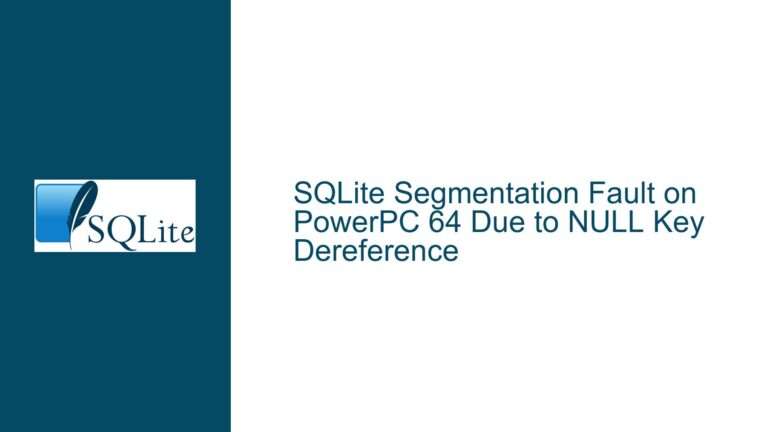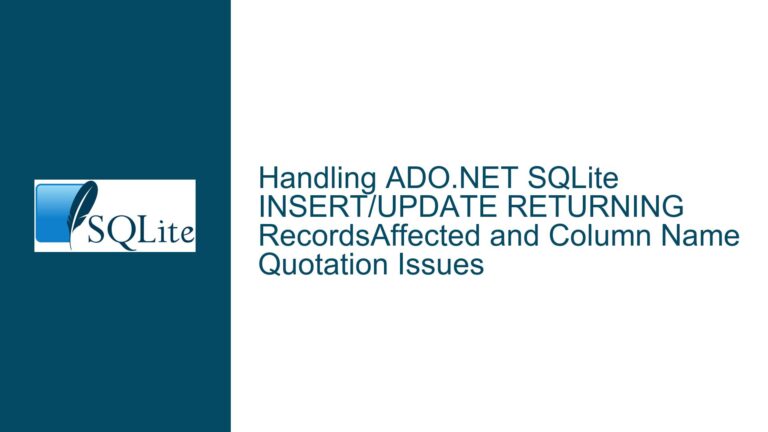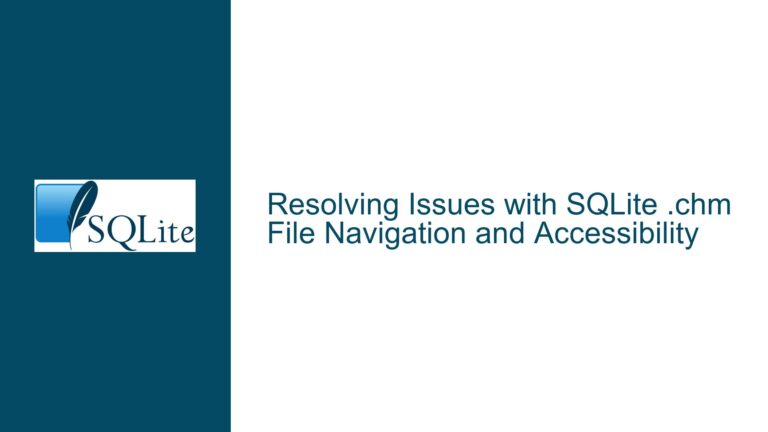Using sqlite3_update_hook for Data Synchronization: Reliability and Alternatives
Understanding sqlite3_update_hook and Its Use Cases
The sqlite3_update_hook is a callback mechanism provided by SQLite that allows developers to monitor changes made to a database. Specifically, it triggers a user-defined function whenever an INSERT, UPDATE, or DELETE operation is executed on a table within the database. This hook is particularly useful for scenarios where developers need to track changes in real-time, such as synchronizing data across multiple devices or logging database modifications for auditing purposes.
In the context of data synchronization, sqlite3_update_hook can be employed to detect changes made on one device (e.g., Device A) and propagate those changes to another device (e.g., Device B). However, the reliability and limitations of this approach must be carefully considered. For instance, the hook only captures changes made on the same database connection where it is registered. This means that if multiple threads or processes are accessing the database, changes made by one thread will not be captured by the hook registered on another thread. This limitation is critical when designing systems that require robust and consistent data synchronization.
Moreover, the sqlite3_update_hook does not provide access to the old values of updated or deleted rows. This can be a significant drawback in scenarios where the previous state of the data is necessary for conflict resolution or auditing. For such cases, SQLite offers the sqlite3_preupdate_hook, which provides access to both the old and new values of the affected rows. This makes sqlite3_preupdate_hook a more suitable choice for applications that require detailed change tracking.
Limitations and Challenges of sqlite3_update_hook in Multi-Threaded Environments
One of the primary challenges with sqlite3_update_hook is its inability to capture changes made by other threads or connections. This limitation stems from the fact that SQLite connections are independent of each other, and hooks registered on one connection do not affect or interact with hooks on another connection. In a multi-threaded application, where multiple threads may be performing database operations concurrently, this can lead to missed updates and inconsistencies in data synchronization.
For example, consider a scenario where Thread 1 inserts a new record into a table, and Thread 2 updates an existing record. If sqlite3_update_hook is registered on Thread 1’s connection, it will only capture the insertion performed by Thread 1. The update performed by Thread 2 will not trigger the hook on Thread 1’s connection, resulting in an incomplete synchronization process. This behavior is particularly problematic in distributed systems where data consistency across devices is paramount.
Another challenge is the lack of transactional context in the sqlite3_update_hook. The hook is triggered immediately after each individual INSERT, UPDATE, or DELETE operation, regardless of whether the operation is part of a larger transaction. This can lead to premature synchronization attempts, where changes are propagated before the transaction is committed. If the transaction is later rolled back, the synchronized data will be inconsistent with the source database.
Alternatives and Best Practices for Reliable Data Synchronization
Given the limitations of sqlite3_update_hook, developers should consider alternative approaches for implementing reliable data synchronization. One such alternative is SQLite’s Session Extension, which is specifically designed for tracking and replicating changes between databases. The Session Extension provides a more robust and flexible mechanism for capturing changes, including support for multi-threaded environments and transactional consistency.
The Session Extension works by creating a "session" object that tracks changes made to a database. These changes can then be serialized and applied to another database, ensuring that both databases remain in sync. Unlike sqlite3_update_hook, the Session Extension captures changes at the transaction level, ensuring that only committed changes are propagated. This eliminates the risk of premature synchronization and ensures data consistency across devices.
Another alternative is the use of sqlite3_preupdate_hook, which provides access to the old and new values of updated or deleted rows. This makes it a better choice for applications that require detailed change tracking or conflict resolution. However, like sqlite3_update_hook, sqlite3_preupdate_hook is limited to the connection on which it is registered and does not address the challenges of multi-threaded environments.
For developers who require a lightweight and portable solution, LiteSync is a viable option. LiteSync is a third-party library that builds on SQLite’s capabilities to provide real-time data synchronization across devices. It handles the complexities of multi-threaded access and conflict resolution, making it a more robust choice for applications that require reliable synchronization.
In conclusion, while sqlite3_update_hook can be a useful tool for simple change tracking, its limitations make it unsuitable for complex data synchronization tasks. Developers should carefully evaluate their requirements and consider alternative solutions such as the Session Extension or LiteSync to ensure reliable and consistent data synchronization. By leveraging these tools, developers can overcome the challenges of multi-threaded environments and achieve robust data synchronization across devices.






